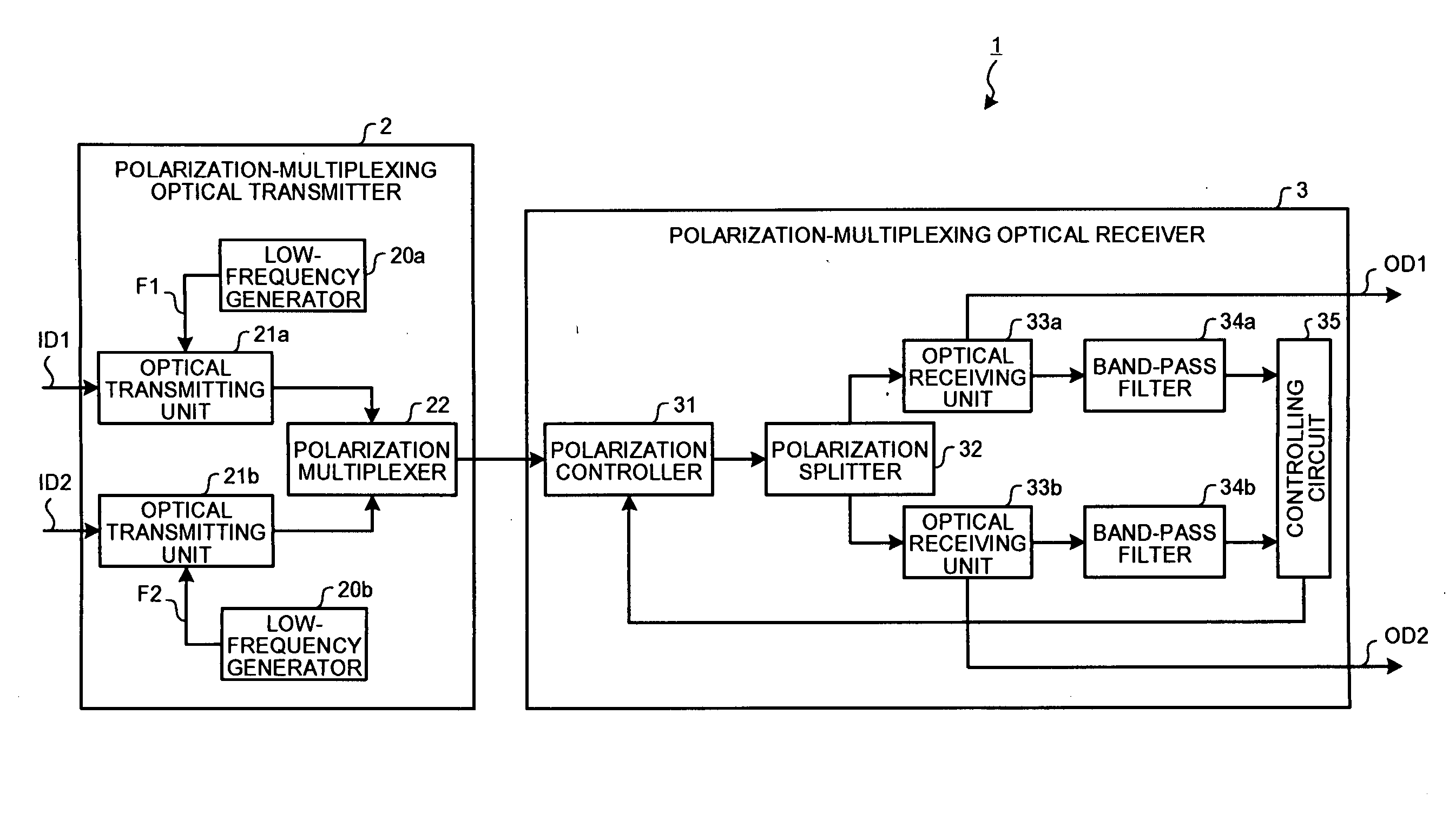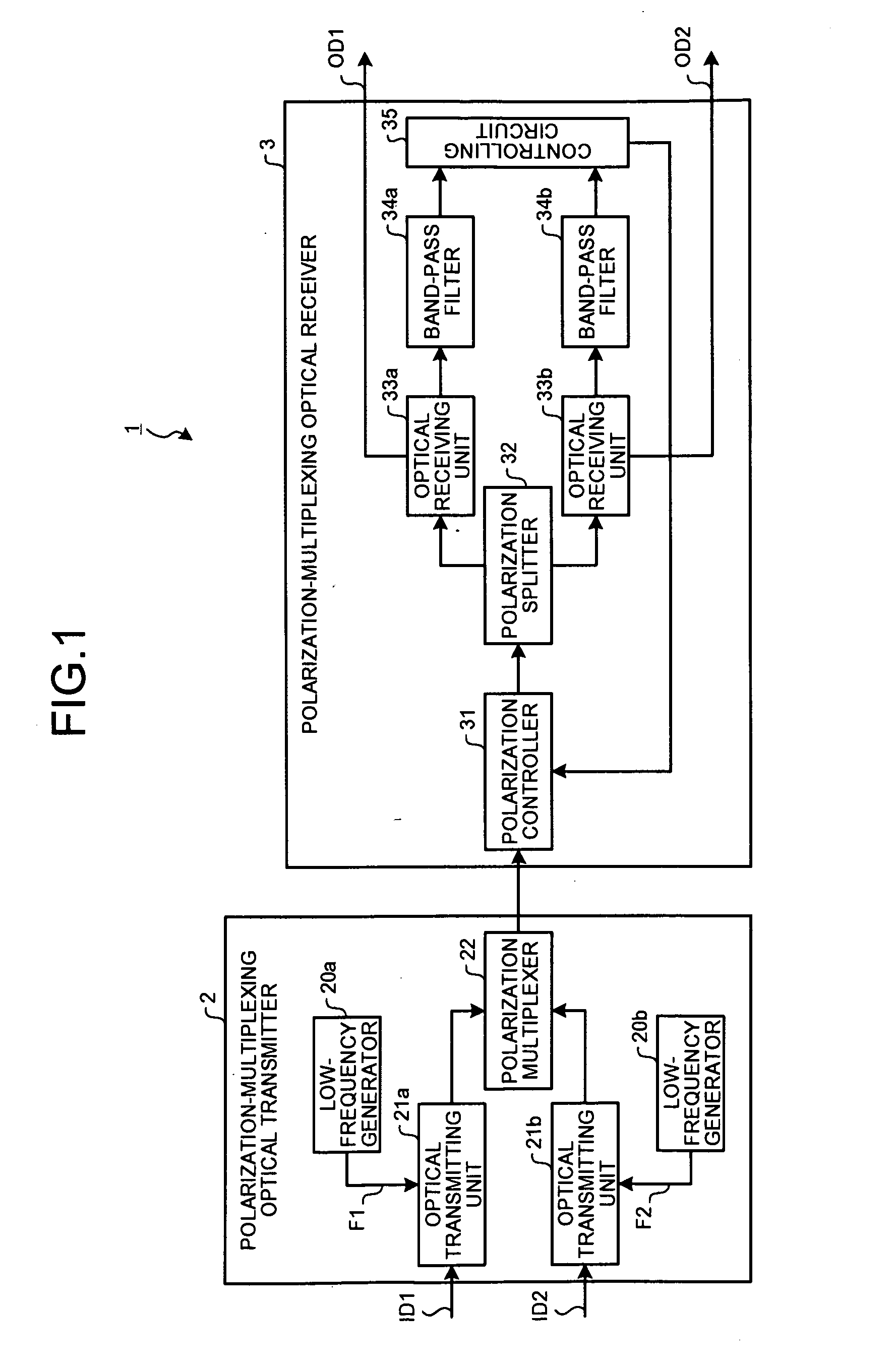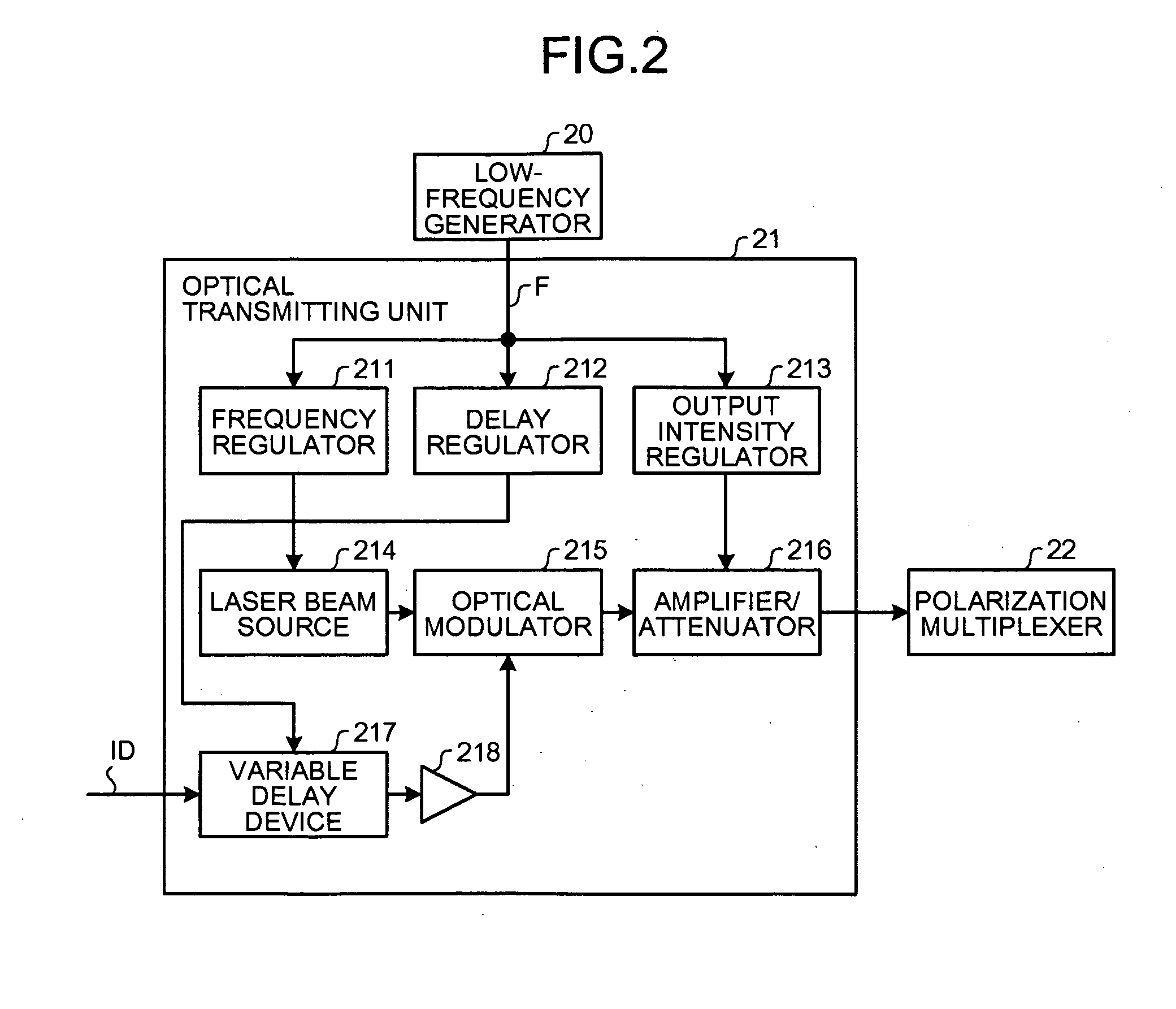Polarization-multiplexing optical transmitter polarization-multiplexing optical receiver, polarization-multiplexing optical transceiving system, and controlling method thereof
- Summary
- Abstract
- Description
- Claims
- Application Information
AI Technical Summary
Benefits of technology
Problems solved by technology
Method used
Image
Examples
first embodiment
[0026]A structure of a polarization-multiplexing optical transceiving system according to a present embodiment is explained first. FIG. 1 is a block diagram of a polarization-multiplexing optical transceiving system according to a As shown in FIG. 1, a polarization-multiplexing optical transceiving system 1 includes a polarization-multiplexing optical transmitter 2 and a polarization-multiplexing optical receiver 3. The polarization-multiplexing optical transmitter 2 and the polarization-multiplexing optical receiver 3 are connected by an optical transmission line of a wavelength division multiplexing system (WDM).
[0027]The polarization-multiplexing optical transmitter 2 includes low-frequency generators 20a and 20b, optical transmitting units 21a and 21b, and a polarization multiplexer (polarization beam combiner (PBC)) 22. The optical transmitting units 21a and 21b and the polarization multiplexer 22 are respectively connected by a polarization maintaining fiber (PMF).
[0028]The l...
second embodiment
[0064]In the second embodiment, the correlation is determined by using the components of the fixed waveform signals F3 included in the two signals. In other words, a value of the signals output from the multipliers 36a and 36b increases when more and more components of the fixed waveform signals F3 are included in the signals output from the optical receiving units 33a and 33b and the correlation is determined as high. However, the value of the signals output from the multipliers 36a and 36b becomes small when the components of the fixed waveform signals F3 are not included in the signals output from the optical receiving units 33a and 33b and the correlation is determined as low.
[0065]In the optical receiving unit 33a according to the second embodiment, it is desirable to input all the signals transmitted from the optical transmitting unit 21a in which the fixed waveform signals F3 are input. Thus, it is desirable to control the signals such that the value of the signals output fro...
third embodiment
[0072]It is desirable that the signals output from the optical receiving unit 33ta correspond to the signals transmitted from the optical transmitting unit 21a and the signals output from the optical receiving unit 33tb correspond to the signals transmitted from the optical transmitting unit 21b. Furthermore, the signals transmitted from the optical transmitting unit 21a and the signals transmitted from the optical transmitting unit 21b include separate data. Thus, a minimum correlation value is desirable upon multiplying and averaging the signals output from the optical receiving unit 33ta and the signals output from the optical receiving unit 33tb. In the third embodiment, more and more common components are included in the two signals when an anticipated value of the correlation increases. Thus, the polarization-multiplexing signals cannot be stably split.
[0073]A controlling circuit 35t according to the third embodiment generates the feedback control signals for minimizing the va...
PUM
 Login to View More
Login to View More Abstract
Description
Claims
Application Information
 Login to View More
Login to View More - R&D
- Intellectual Property
- Life Sciences
- Materials
- Tech Scout
- Unparalleled Data Quality
- Higher Quality Content
- 60% Fewer Hallucinations
Browse by: Latest US Patents, China's latest patents, Technical Efficacy Thesaurus, Application Domain, Technology Topic, Popular Technical Reports.
© 2025 PatSnap. All rights reserved.Legal|Privacy policy|Modern Slavery Act Transparency Statement|Sitemap|About US| Contact US: help@patsnap.com



